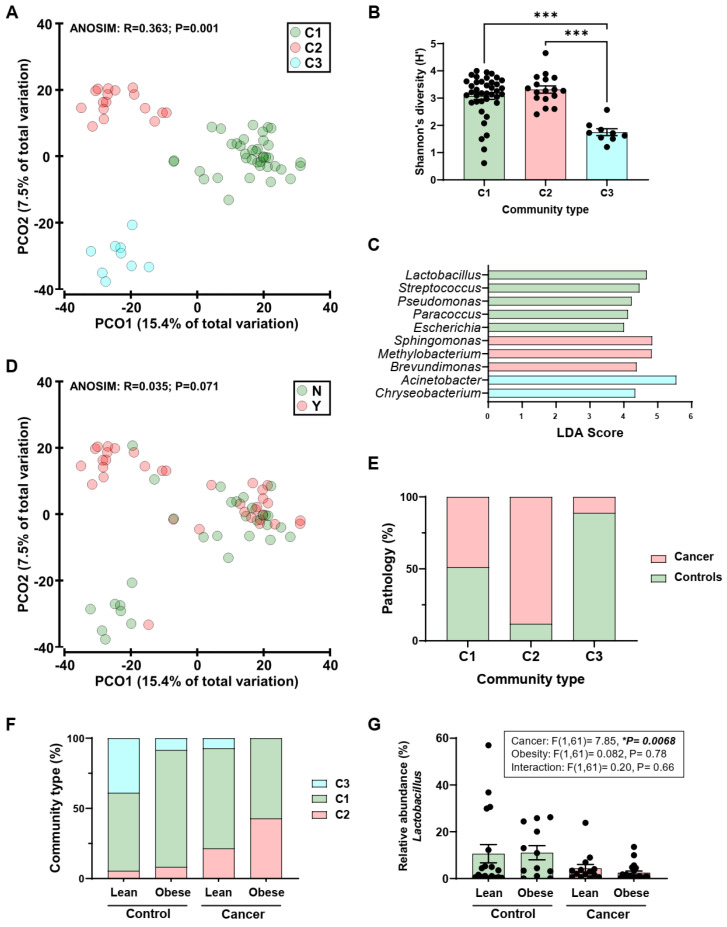Figure 1.
Endometrial microbiota of patients with endometrial cancer and controls. (A): Principal coordinate (PCO) analysis of bacterial beta diversity across community types (C1-3). The ordinations were generated from Bray-Curtis resemblance matrices on square-root transformed bacterial relative abundances. Analysis of similarities (ANOSIM) was employed to test for significant differences in beta diversity. (B): Shannon’s diversity across community types. Significance was analyzed by Kruskal-Wallis with Dunn’s multiple comparisons test. *** p < 0.001. (C): Genera found to be significantly differentially abundant across community types. Taxa were identified using Linear discriminant analysis Effect Size (LEfSe). Genera with a Linear discriminant analysis (LDA) score > 4 are displayed. (D): Principal coordinate analysis of bacterial beta diversity between patients (Y, tumor sample) and controls (N). (E): Prevalence (%) of patients with endometrial cancer across community types. (F): Prevalence (%) of community types in patients and controls stratified according to body mass index (BMI). (G): Relative abundance (%) of Lactobacillus in patients and controls stratified according to BMI. Significance was tested using two-way ANOVA, * p < 0.01.

